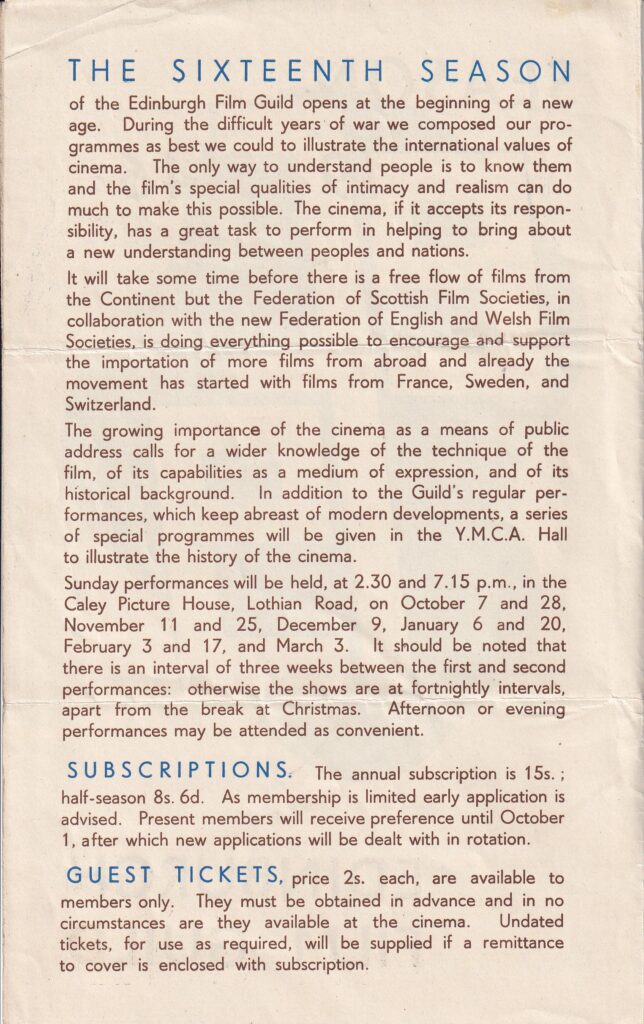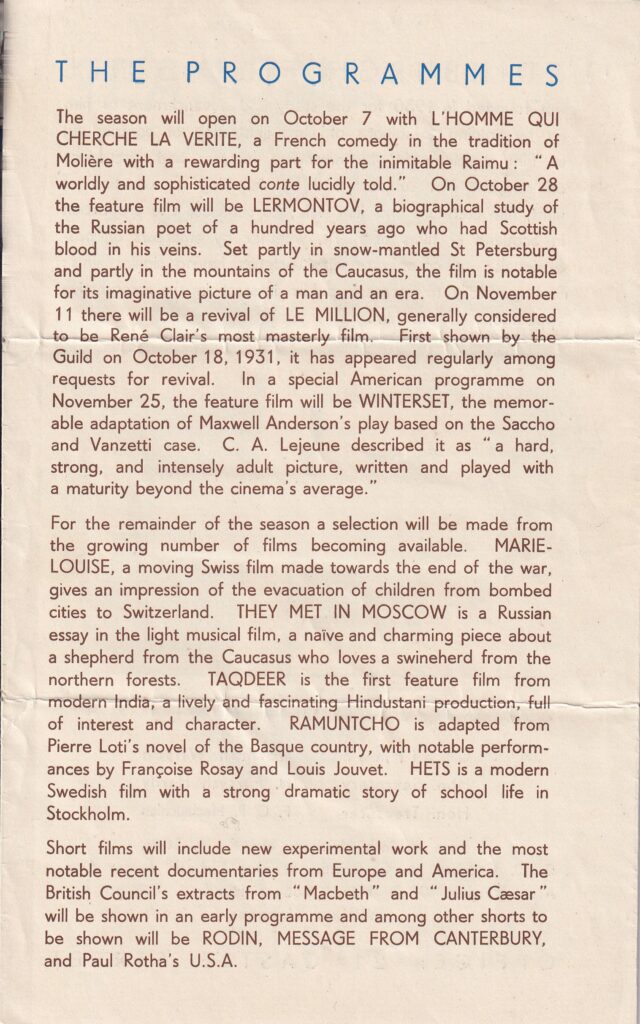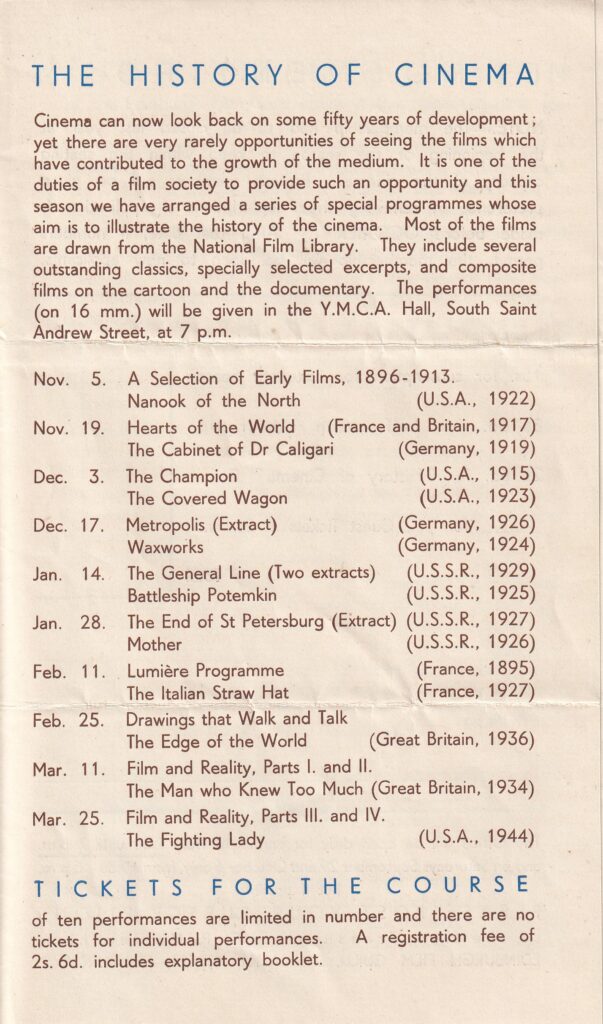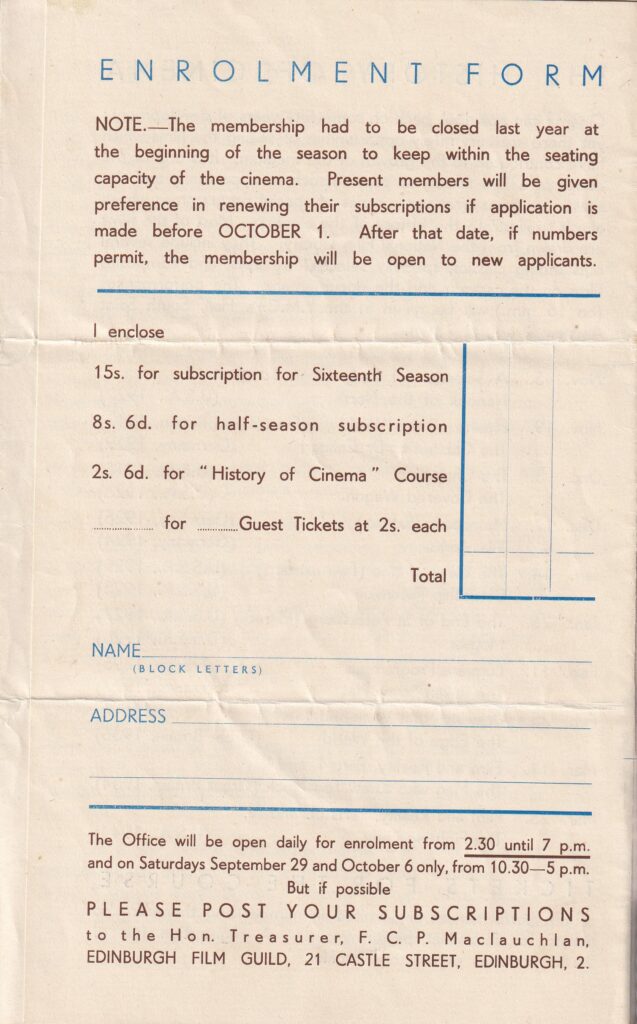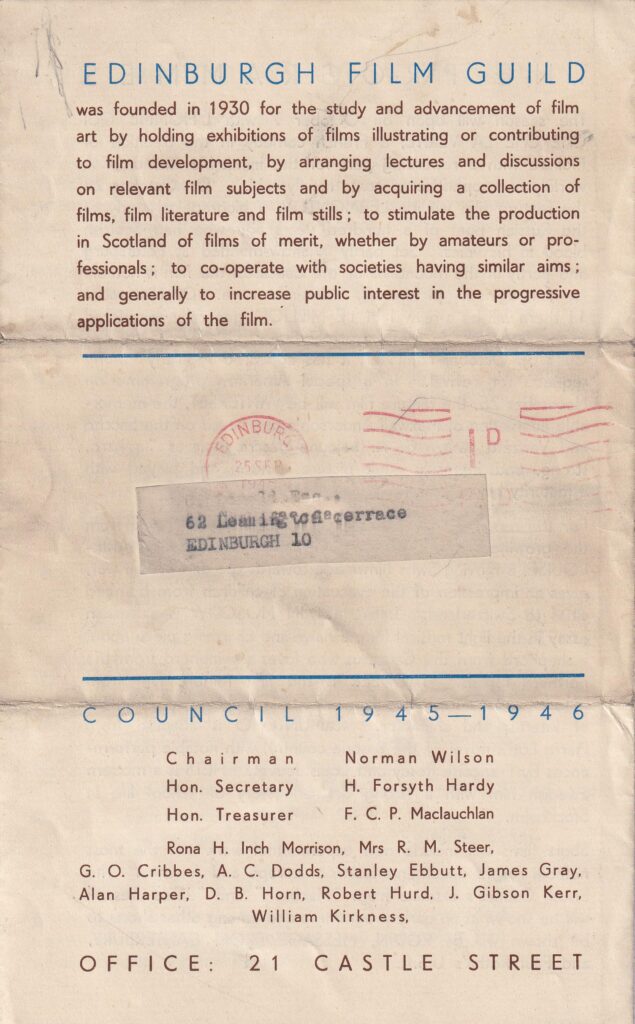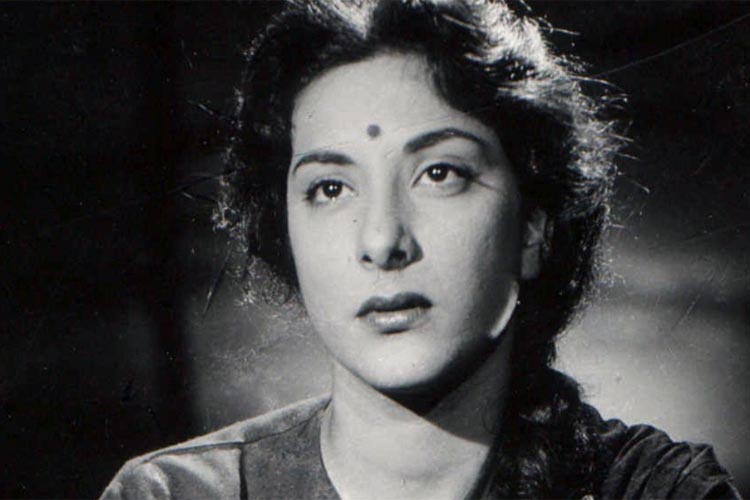

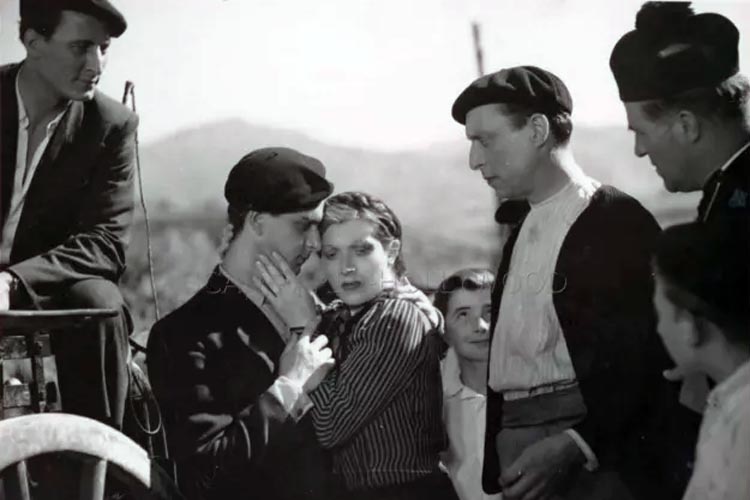
Images (left to right): TAQDEER, LERMONTOV, RAMUNTCHO
THE SEASON. “The 16th Season of the Edinburgh Film Guild opens at the beginning of a new age. During the difficult years of war, we composed our programmes as best we could to illustrate the international values of cinema. The only way to understand people is to know them and the film’s special qualities of intimacy and realism can do much to make this possible. The cinema, if it accepts its responsibility, has a great task to perform in helping to bring about a new understanding between peoples and nations.”
THE SCREENINGS took place in the Caley Picture House, Lothian Road. A series of special, educational, programmes were held in the Y.M.C.A. Hall “to illustrate the history of cinema” (details below).
THE FILMS included L’HOMME QUI CHERCHE LA VERITE, “a French comedy in the tradition of Molière with a rewarding part for the inimitable Raimu.” LERMONTOV, “A biographical study of the Russian poet of a hundred years ago who had Scottish blood in his veins.” LE MILLION, “generally considered to be René Clair’s most masterly film. First shown by the Guild on October 18, 1931.” WINTERSET, a “memorable adaptation of Maxwell Anderson’s play based on the Sacco and Vanzetti case.” MARIE-LOUISE, “a moving Swiss film made towards the end of the war, gives an impression of the evacuation of children from bombed cities to Switzerland.” THEY MET lN MOSCOW “is a Russian essay in the light musical film.” TAQDEER, “the first feature film from modern India, a lively and fascinating Hindustani production, full of interest and character.” RAMUNTCHO “is adapted from Pierre Loti’s novel of the Basque country.” HETS “is a modern Swedish film with a strong dramatic story of school life in
Stockholm.” Short films included “new experimental work and the most notable recent documentaries from Europe and America.” Other shorts were RODIN, MESSAGE FROM CANTERBURY, and Paul Rotha’s U.5.A.
THE HISTORY OF THE CINEMA: “Cinema can now look back on some fifty years of development, yet there are very rarely opportunities of seeing the films which have contributed to the growth of the medium. lt is one of the duties of a film society to provide such an opportunity and this season we have arranged a series of special programmes whose aim is to illustrate the history of the cinema.” The performances took place in the Y.M.C.A. Hall, South Saint Andrew Street, Edinburgh EH2, between November 1945 and March 1946.
Nov. 5. A Selection of Early Films, 1896-1913. Nanook of the North (U.S.A., 1922) / Nov. 19. Hearts of the World (France and Britain, 1917) The Cabinet of Dr Caligari (Germany, 1919) / Dec. 3. The Champion (U.S.A. 1915), The Covered Wagon (U.S.A. 1923) / Dec. 17. Metropolis (Extract) (Germany, 1926), Waxworks (Germany, 1924) / Jan. 14. The General Line (Two extracts) (U’S.S.R., 1929), Battleship Potemkin (U.S.S.R., 1925) / Jan. 28. The End of St Petersburg (Extract) (U.S.S.R., 1927), Mother (U’S.S.R’, 1926) / Feb. 11. Lumière Programme (France, 1895), The Italian Straw Hat (France, 1927) / Feb. 25. Drawings that Walk and Talk, The Edge of the World (Great Britain, 1936). Mar. 11. Film and Reality, Parts l. and ll. The Man Who Knew Too Much (Great Britain, 1934) / Mar. 25. Film and Reality, Parts lll and lV, The Fighting Lady (U.S.A. 1944)
- Note: Quotations are from the Edinburgh Film Guild Season Programme 1945-1946.
Below: Programme of the 1945-1946 Season (click on image to enlarge)

